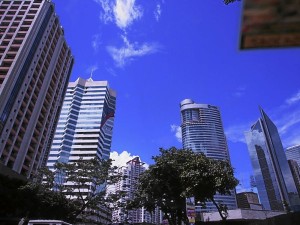No real estate bubble but experts wary

Enrique Soriano, Ateneo program director for real estate and senior adviser for Wong+Bernstein Business Advisory, recently tackled the phenomenon in a lecture, explaining further that the present property situation does not show that the Philippines isn’t in a bubble yet as the local has exhibited strong fundamentals. He said, however, that the country shouldn’t let its guard down.
He revealed to Inquirer Property of the indicators (such as price points, low borrowing rates, concentration on the National Capital Region, inexperienced players) that lead to a bubble. He also warned that global events may also induce a bubble.
“The key is for stakeholders to be well informed, be made aware of their responsibilities and push for collective programs on property best practices,” Soriano said.
He added that “the role of government is to promote a regularity regime and it must play that role without fear or favor.”
Victor Asuncion, CBRE executive director for global research and consultancy, said there is no possibility of an asset price bubble in the Philippine real estate industry because most projects being built in Metro Manila and other urban centers cater to end-users and not speculating buyers (for office and residential purposes).
Article continues after this advertisementGrowing consumer demand
Article continues after this advertisement“For retail, the developments are addressing the growing consumer demand. Therefore, the buyers of land across the country are either developing or landbanking for future development and not necessarily to ‘trade’ the asset. In fact, there is scarcity of developable land in key urban centers now like Makati, Taguig, Quezon City and Alabang,” Asuncion said.
He cited an expert definition of asset price bubble as the continuous sharp rise in asset prices with expectations of further price increases attracting more buyers, particularly speculators, with the intention to trade the assets and not for end-use or for recurring income.
Soriano said “The current scenario in the country is that almost 80 percent of residential and office developments are in the National Capital Region and developers will jockey for every piece of real estate. With this happening, land prices will continue to increase,” Soriano said.
Naturally, he said, developers would now shift from mid-rise to high-rise developments to offset the higher than usual cost of land. The next scenario would be to build higher, more densely and borrow more to finance bigger, riskier developments.
The ideal scenario would be for developers to disperse their development thrusts outside NCR. The growth areas outside of Manila are Subic and Clark, Iloilo, Bacolod, General Santos City, Cagayan De Oro, Cebu and Davao and even Antipolo, Sta. Rosa City, Pampanga and Bulacan.
Spotting red flags
Soriano stressed that recognizing when a bubble may occur becomes easier with the ability to spot red flags in the areas of lending, spending and employment.
“When the number of available home loan programs increases, home ownership increases with it. While this is sometimes not dangerous, it can be a clear sign of a bubble, especially when buyers increase housing obligations while their income remains the same,” he said.
Soriano said that “as long as mortgages are in good standing, values hold firm or increase. However, as natural life occurrences (illness, lay-offs and pay cuts), unfold in large numbers, condo owners find themselves at the mercy of downsizing—even foreclosure, which gradually drives the price of real estate down.”
Buyer’s market
Soriano also opined: “However, when a market becomes saturated with mortgage debt, lending will often decrease and the number of potential home-buyers follows. Equity naturally slips and profits from home sales gradually decrease (in what becomes a buyer’s market).
“When values continue to fall, it often leads to rashes of homeowners who are suddenly ‘underwater’ (who owe more on their mortgages than their homes are worth) and in extreme cases, foreclosure looms.”
Soriano also cited an increase in unemployment when job fronts level off and unemployment rates increase as a sign that a bubble could be on the horizon; also when workers begin moving to more favorable markets in search of better jobs, or when consumer spending decreases and the market becomes flooded with available properties. He said such scenarios drive values down, marking the true making of a bubble.